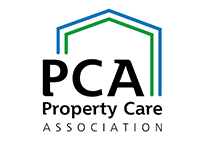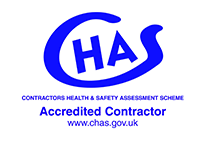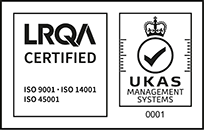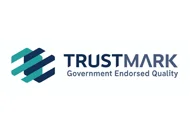Call us free on 0808 168 9540
Call us free on 0808 168 9540

Since 2003, Phlorum has been providing commercial Japanese knotweed removal services on all types and sizes of commercial and development sites.
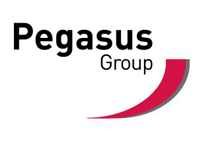
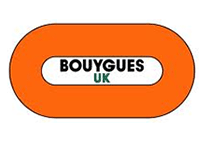
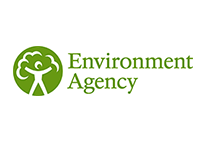
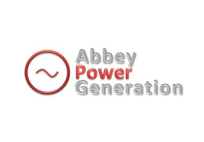
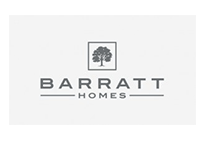



Commercial sites can often be hotbeds of Japanese knotweed and other invasive plants. This is because they tend to contain significant areas of marginal land that aren’t frequently managed or that have been left to grow ‘wild’. These parts of commercial sites often border other types of land and habitats where knotweed can thrive and spread out of sight.
Understanding the risks of knotweed to developers and its potential to be located on commercial sites, there are important considerations for anyone owning or managing such land.
Japanese knotweed (Reynoutria japonica) is an invasive non-native species (INNS) that was promoted in the 1800s as an exotic addition to large gardens and parks. However, it was quite quickly realised that its ease of establishment, rapid rate of growth, dense cover and seeming indestructibility made it a garden nightmare. It eventually, in the 1980s became subject to legislation that made it a criminal offence to cause knotweed to spread into the wild.
Knotweed spreads through small pieces of its roots (actually underground stems called rhizomes) breaking off and finding their way to new locations in contaminated soil or in mud on shoes or machinery. It almost never spreads by seed in the UK, so the fact that it can be found in almost every corner of the country is a testament to the scale and speed of its invasiveness.
Due to the size of suitable habitat on many commercial and construction sites, and the fact that it can be years before it’s identified, knotweed can often thrive. As such, the scale of the problem can be much bigger than on other types of land use, such as residential.
A bigger problem often means a bigger solution, and that can mean a bigger cost to put right. Early and proactive action is key to minimising risks, costs and dealing with the problem before it grows bigger.
A suitable Japanese knotweed removal contractor will know the onerous requirements placed on it by the creation, management, movement and disposal of knotweed wastes. There are waste laws and regulations, usually regulated by the Environment Agency in England (Natural Resources Wales in Wales, the Scottish Environment Protection Agency in Scotland and the Northern Ireland Environment Agency in Northern Ireland) that must be followed.
There are also various sources of guidance from appropriate UK and devolved administration environmental departments.
Due to the large size of many commercial and development sites, and the fact that they can border diverse land uses, they can harbour quite large knotweed infestations. These can be to the detriment of native flora and fauna, and, if these are large parcels of land, this can have a significant effect on local biodiversity.
With regulations requiring landowners and developers to increase the quality of environmental resources and ecosystem services, properly removing knotweed and, where appropriate, replacing it with biodiverse habitat has the potential to benefit everyone.
Effective management of knotweed on commercial sites will obviously stop the problem from getting bigger.
Clearly, to be effective, the aim of knotweed management should be to fully solve the problem. Most commercial sites that have habitats suitable for knotweed will typically have a landscape management plan in place to maintain such areas of vegetation.
The ground-workers involved in such maintenance work can’t always be relied upon to identify Japanese knotweed and to understand the risks it poses. Therefore, it is important to include specific knotweed management information in such plans, and, if necessary, to appoint suitably qualified and experienced staff to deal with any knotweed problems.
In many commercial settings where knotweed is found, it will be essential to employ such professionals. This is because in order to satisfy the risk requirements of most commercial property insurers and lenders, knotweed treatment works will need to be covered by special types of insurance and guarantees that are only available to professional firms.
As is the case for knotweed on pretty much any type of site, there are essentially two different commercial Japanese knotweed removal methods.
There are relatively few products currently available that have been shown to be effective in treating knotweed. However, due to the fact that the herbicides need to be applied to the above ground parts of the plants (so that they can be translocated to the rhizomes), and due to the majority of the plants’ mass being underground, it can take several years of repeat applications to effectively treat this rhizome ‘iceberg’.
Due to the depth of the rhizomes in the ground (which can be more than a metre deep), and their wide lateral spread (often two or three metres in radius from the stems), the size of the hole and the volume of the waste (which attracts high disposal rates and taxes at suitable facilities) can result in very high costs – often tens of thousands of pounds for a typical infestation, compared to several thousand pounds for herbicide treatment.
The principal benefit of an excavation solution is that they are immediately effective in removing the problem, but they can be expensive. So, the most suitable option for a knotweed infestation on a commercial site depends mainly on how quickly and completely the knotweed needs to be removed. Typically, where there are plans to develop the land, excavation is the preferred, and most complete, treatment method.
The principal concern of knotweed affecting commercial sites, housing associations and developers was initially one of potential damage to built structures and areas of hardstanding. However, the issue has more recently become one of blight, as many of the physical impacts of knotweed appear to have been overstated – with sensationalist media stories being blamed.
Regardless, blighting effects have a huge impact on perceived risks and the due diligence and decision making aspects of property purchases. Consequently, the impact on land and property value caused by knotweed is a significant issue. More so, is the fact that cost impacts translate into potential damages and therefore legal action, so the impact of knotweed on property cannot be ignored.
The typical process for managing knotweed risks that affect commercial property follows the following steps:
As knotweed is a well-known property risk, most property and land use professionals should know about it, so it is likely that it will be picked up by others during the due diligence stage of a property transaction or during routine land management activities.
It is usual for surveys or audits of land to be proactively carried out that include knotweed as a potential risk item. This can be as a part of routine management or as part of a property sale. A professional will also typically be reactively appointed to undertake a Japanese knotweed survey in response to it being identified by others, so that the risk and likely remediation costs can be quantified.
This should include quantitative information from the survey about the area and location of the knotweed, usually on a scaled map. This will provide the necessary information to enable the suitably qualified and experienced surveyor to calculate the costs of treatment.
There will usually be a level of uncertainty in such quotes, to account for the fact that it cannot be guaranteed how long herbicide treatment will take (typically they can take from three to five years), and volume calculations are always an estimates because you can’t see from the surface how deep the rhizomes are in the ground.
Although there are principally two Japanese knotweed treatment methods, they can often be combined and methods can be employed to save time, waste volumes and money.
Due to commercial and development sites often being large, with areas that require vegetation management (where herbicide applications are a more cost-effective solution), a hybrid chemical/mechanical approach can often be employed, with mechanical measures often organised in a way that can segregate active rhizomes from inert soil, hence reducing the volume of material subject to expensive disposal charges.
The duration of the knotweed management plan will depend on the treatment that was carried out. However, for both chemical and mechanical treatments, there will usually be a period of monitoring to ensure that no regrowth occurs and the treatment has therefore been effective.
This is typically stated in guidance as being a further two years after knotweed has been excavated or two years after the last herbicide treatment when above ground growth was last observed.
In order to meet lending and insurance risk requirements, most mortgage lenders and property insurers will require some form of assurance that any knotweed management on a commercial site has been professionally and effectively undertaken.
Although the purpose of insurance backed guarantees is to protect the insured from the knotweed contractor ceasing to trade before their work is complete, it has become the ‘gold-standard’ for demonstrating the professionalism of a contactor.
This is because such insurance is not easy to obtain without being a member of a suitable trade body.
In order to effectively manage knotweed risks and to instil confidence in any treatment works done, suitably qualified and experienced knotweed professionals should always be used. Membership of an approved professional body like the PCA is a minimum requirement.
However, not all firms are the same, and the qualifications and experience of those undertaking the treatment work should be checked. Some firms rend to specialise in herbicide treatments on domestic properties. There are fewer firms that have a proven track record of removing and treating knotweed on large commercial and development sites.
Phlorum has been managing knotweed on all types and sizes of commercial and development sites since 2003.
We helped write much of the most important and valued guidance and we have helped many clients deal with knotweed issues through the planning process and in response to litigation in the Lands Tribunal and the courts.
We are a truly multi-disciplinary environmental consultancy, with broader and related experience in ecological and contaminated land assessment and more generally in the development planning process.
Our experience, qualifications and reputation are unrivalled. If you appoint us to help solve your commercial Japanese knotweed problem, you can be assured that our experts will understand the issue and will give you the best advice and service.



